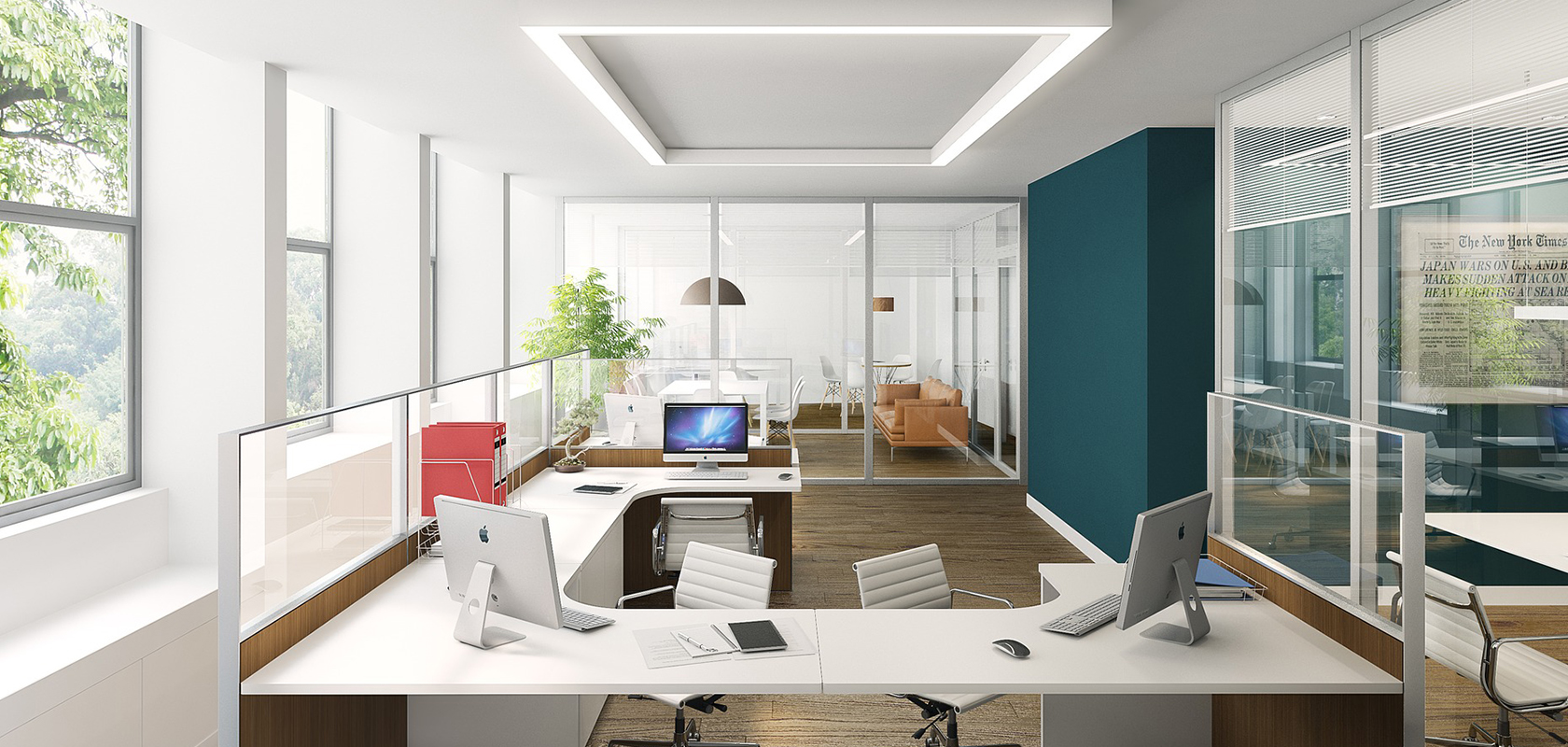
By now you should have a pretty broad knowledge of workplace history. And now, it’s time to look at the present!. What are the most dominant designs now and why? And what do we predict will happen to office design in the future?
It is somewhat hard to pin down “how an office looks today” since every office is different. There is a different way to look at it though. We can switch viewpoints and analyze why every office is so different - and there is where we find the key to office designs and trends today.
It’s when we look at the differences we find the answers. Because the major trend in office design today is adaptation. Depending on conditions, staff and tasks different office designs are built adapted to those needs and demands. For example, a knowledge-based company which heavily depend on interaction and collaboration will have a lot of collaborative surfaces and probably some kind of office landscape. As opposed to a lawyer’s or doctor’s office where there will be more private spaces and closed rooms for those who need it.
Another major trend apart from adaptation is definitely flexibility. If you are about to design a new office you will most likely be advised to create different types of spaces. The reason for this is to offer your coworkers a choice. The utopian vision consists of a coworker entering the office in the morning, plans their day and picks different spaces throughout the day depending on what task they have in front of them.
So, flexibility and adaptation are definitely the two major trends in office design today. But there are also other trends we can see popping up in offices all over the world. They might be serving the major trends but are still very interesting to look at.
A lot of companies are putting up phone booths in their offices. Some go all in and even uses real phone booths. You know those red things that used to stand in the streets. Anyway, the purpose is to offer privacy specifically for phone calls. Maybe you have a phone meeting or you’re just making a call and want to be alone. It’s most common to put these up in an open landscape office.
Huddle rooms are not that different from phone booths really, except they fit more people. The purpose here is to offer spaces for smaller ad hoc meetings or if you need to be alone with your work for a while. The difference from meeting rooms is that it’s non-bookable. If a huddle room is empty, it's free.
This is a concept that derives from the fashion industry. In consists of combining colors that are set far apart from each other on the so-called color wheel. For example, you color-block when you put blue and orange together and that is supposed to inspire creativity. Some offices let different colors represent different departments or parts of the office which helps guide visitors. And also, it looks nice, let’s not forget about that.
Don’t think we’ve forgotten. We would never! Of course, the development of technology has a huge effect on office design. Just the fact that we are now mobile with our computers has paved the way for the flexibility trend. But what we want to highlight are the smarter meeting rooms. Most companies are putting an effort into their meeting rooms and their equipment. New presentation tools, screens, smart microphones etc. We are building rooms that can connect us to the rest of the world in seconds. Talk about revolutionary office design.
It’s time to look forward and we have noticed some trends, slowly being tried out now, that we think will make it big in the near future:
As the millennials take over the workplaces their demands follow. And one major thing they want is for the office to feel like home. Which means more couches, area rugs, board games and so on.
In an open environment some space for privacy is needed. But not in the form of stiff meeting rooms. We can see that flexible modules are becoming more and more popular. Sometimes it takes the form of a glass hub that can be used for a meeting as well as recording a podcast.
Sustainability is rapidly becoming a central part of office design. Which is amazing. It’s taking its design form through a lot of wooden details, more plants and even grass indoors and moss walls.
As remote working is so popular more offices are creating spaces that make the coworkers feel as if they are working remote. For example mimicking a hotel lobby or putting in a beer fridge, game rooms, a fitness area, maybe even a spa.
We hope you’ve enjoyed this journey as much as we have! What do you think about the future trends in office design? Do you think we’re right?
These Stories on Workplace design
Meetio AB/Logitech Nordics AB
Hamngatan 4
211 22, Malmö
Sweden
Magnus Ladulåsgatan 3
SE-118 65 Stockholm
Sweden
Sweden: +46-(0)10-101 95 60
No comments yet
Let us know what you think!